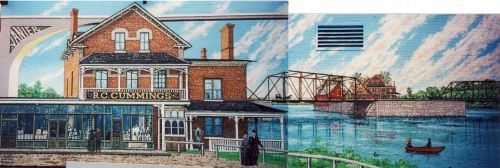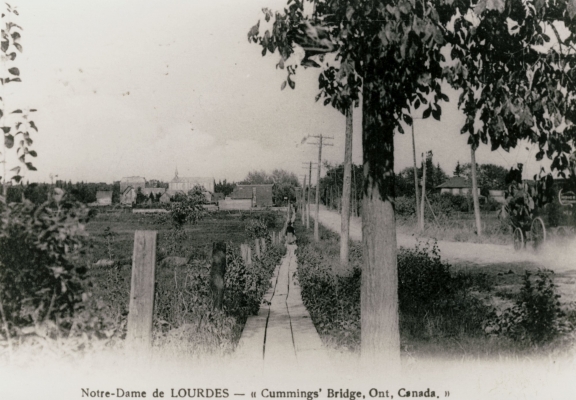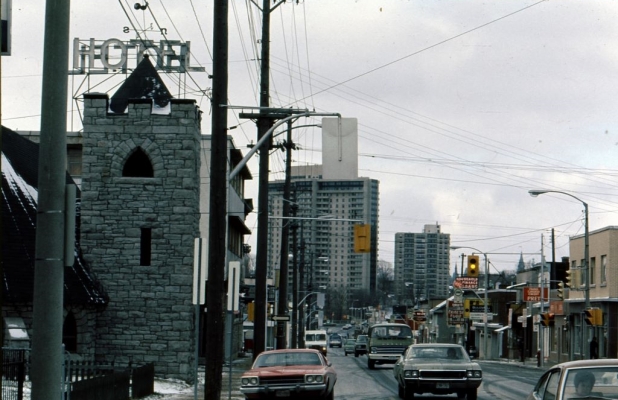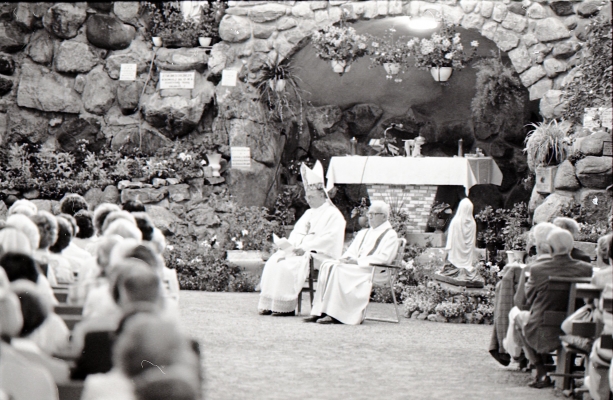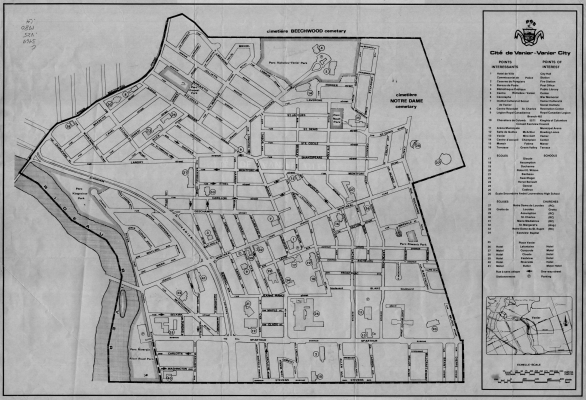The first wooden bridge over the Rideau River – constructed in 1836 by Charles Cummings, rebuilt in 1845, and replaced in 1890 – draws settlement to the area that will become Vanier. Many merchants and civil servants take advantage of the opportunity to move out of Ottawa’s Lowertown, already densely populated. Janeville is founded in 1873, followed by Clarkstown some 20 years later. In 1909, the Ontario government merges the two settlements with Clandeboye to form the village of Eastview.
Pressured by Msgr Duhamel, the Archbishop of Ottawa, to meet the needs of this thriving suburb, the Montfortian Fathers of the Company of Mary establish a parish on Montreal Road in 1887: Notre-Dame-de-Lourdes. With its replica of the grotto of Notre-Dame-de-Lourdes in France, it becomes a place of religious tourism. In 1908, the same Montfortians open St. Charles Church on Beechwood Avenue. The Daughters of Wisdom, for their part, arrive in 1891 to build a boarding school and novitiate on Montreal Road. Other congregations join them to help with teaching. Several other schools are created through their combined efforts, including five French-language elementary schools during the 1950s alone. Eastview does not escape the post-war baby boom, which becomes one of the largest concentrations of Francophones in the capital.
It is in Eastview that the first bilingual public school in Ontario is founded in 1949. Eastview High School is established as a result of interventions from Mayor Donat Grandmaître, supported by influential Eastview citizens, including Edmond Ducharme, the priest of the Notre-Dame-de-Lourdes parish. While only certain courses are meant to be offered in French (French, Latin, history and geography), the school, in fact, functions in French and attracts young people from across the region. Re-baptized André-Laurendeau, this school becomes one of the first French-language public schools in the province. The municipality and the church also join forces to establish a Francophone hospital, Montfort Hospital, which opens its doors in 1953. It becomes famous in the late 1990s for inspiring unprecedented mobilization among Ontario Francophones opposed to its closure decreed by the provincial government.
In 1969, Eastview takes the name of Vanier to reflect its Francophone character. But the face of French Vanier is already starting to fade. Francophones represent two-thirds of the population in 1971, but twenty-five years later, in 1996, Francophones comprise only half of Vanier’s inhabitants. They vary from educated, prosperous residents with high-status employment on the one hand, to less fortunate, often female heads of household on the other. Vanier’s landscape tends to fracture along Montreal Road, the city’s main thoroughfare, between the more institutional sector to the east, which houses the Town Hall until 1985 (no. 1 on the map), and the district to the west where shops, resource centres and agencies serve the most disadvantaged inhabitants. Many initiatives have been carried out over the past 20 years to upgrade the downtown area, including the unique Vanier Museopark, created in 2006 to help Vanier maintain its identity.
Cummings Bridge mural at the Eastview Shopping Centre, Selkirk Street, by David Yeatman, 2000. The mural depicts everyday life in the vicinity of the general store at the beginning of the 20th century. Between 1998 and 2010, the Publi-Arts group installs some thirty murals in the city’s Vanier sector.
Source : Vanier Museopark, Vanier Circuit, Stop 3, Mural Cummings (centre commercial Eastview).
